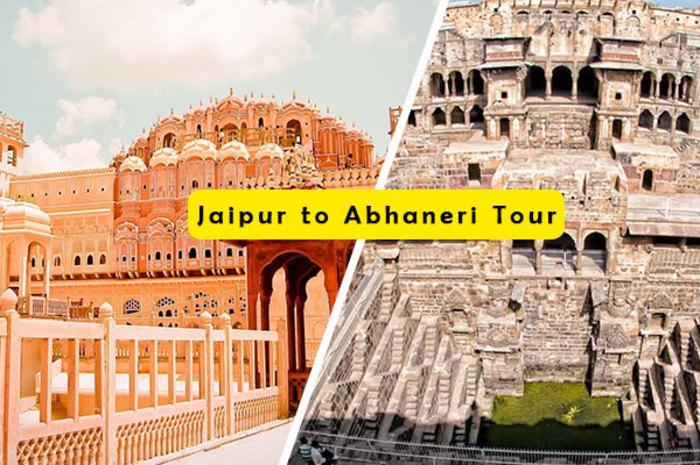(Same day) Abhaneri from Jaipur
Jaipur-Abhaneri(0N)--Jaipur(0N)--1D

Pickup from Jaipur, drive to Abhaneri.In the evening drive back to Jaipur.
Jaipur:
Founded in AD 1727 by Sawai Jaisingh II, Jaipur the capital of Rajasthan is popularly known as the Pink City with broad avenues and spacious gardens. The capital of Rajasthan, Jaipur is steeped in history and culture. Here the past comes alive in magnificent forts and palaces, blushed pink, where once lived the maharajas. The bustling bazaars of Jaipur, famous for Rajasthani jewellery, fabric and shoes, possess a timeless quality and are surely a treasure-trove for the shoppers. This fascinating city with its romantic charm takes you to an epoch of royalty and tradition. Jaipur has been laid according to the conventional nine-grid pattern that astrologers believe to be lucky, and which has been recommended in the ancient Indian treatise on architecture. Each grid consists of a square, and these have been planned so that, at the heart of the city is the City Palace. Spread around it, in rows, are public buildings, the residences of noblemen, the living and trading quarters of merchants and artisans. Straight, wide roads run through the city, while a high, crenellated wall that forms its defense is pierced with seven gateways that serve as entry points. Today, these walls may be more difficult to spot since the city has grown far beyond its original plan, but they are still there, proof that though Jaipur saw no great siege, it was more than adequately prepared for it. Jaipur’s architectural planning may have been ancient, but its execution was definitely modern. Best represented by the City Palace complex, it brought together all that was excellent in Rajput and Mughal architecture, creating a new tradition that found wide currency over much of north IndiaJaipur has much to offer visitors — everything from pageants and festivals to extraordinarily clad people, a wealth of handicrafts, a royal legacy of palaces, and sightseeing — that will occupy their time. However, should the visitors simply choose to walk around the streets of the old city instead, they will not regret it. All of Jaipur is an architectural gem, and no scheduled sight seeing can even hope to do justice to this rare city.
Abhaneri:
Abhaneri is a village in the Dausa district of the Indian state of Rajasthan. Abhaneri is popular for the Chand Baori step well and Harshat Mata Temple. The village was originally named Abha Nagri, ("City of Brightness"), but over time the name evolved to its present form. Abhaneri is now in ruins, but attracts tourists from across the globe. Chand Baori, Abhaneri is one of the oldest, deepest and largest baoris (stepwells) in Rajasthan. The oldest parts of the structure date back to the 8th century, and significant additions were made in the 18th century. The stepwell consists of three flight of stairs descending into the earth with a subterranean palace on one side. The flight of stairs and the palace are arranged in a square pattern with the well lying at the bottom. The flight of steps descends thirteen stories. The Harshat Mata temple is located near the Chand Baori. It was a ritual to wash hands and feet at Chand Baori before visiting the temple. It is dedicated to Harshat Mata, the goddess of joy and happiness. Substantially destroyed by Islamic invaders in the 10th Century, the remains of the temple still boast architectural and sculptural styles of 10th Century India. The temple is on a raised platform from where unrestricted views of nearby fertile regions can be seen. A small village nearby houses many artisans.